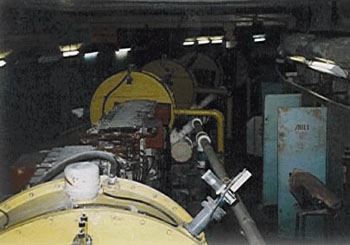
After seven years of inactivity owing to difficult economic conditions, the electron synchrotron in Yerevan, Armenia, is in operational again.
Work resumed last May on the 70 m diameter machine, which was commissioned in 1967. By the middle of October last year, the various regimes of electron acceleration up to 4.15 GeV had been tested and a beam of linearly polarized photons in the 0.91.8 GeV range had been obtained.

The asymmetry of deuteron photodisintegration was measured at photon energies up to 1.8 GeV and at an angle of 90° in the centre-of-mass. This asymmetry suggests problems in understanding the process in terms of constituent quark counting rules.
A magnetic spectrometer (for protons) in coincidence with a neutron hodoscope spectrometer allow the two-body decay of the deuteron to be separated from a multi-particle background. Scientists from the Joint Institute for Nuclear Research in Dubna, near Moscow, took part in the experiment.
Plans for the Yerevan machine include continuing these photo-disintegration studies and investigating quasi deuteron disintegration in light nuclei, such as helium-4 and lithium-6, using the polarized photon beam. The team hopes to expand its collaboration.





